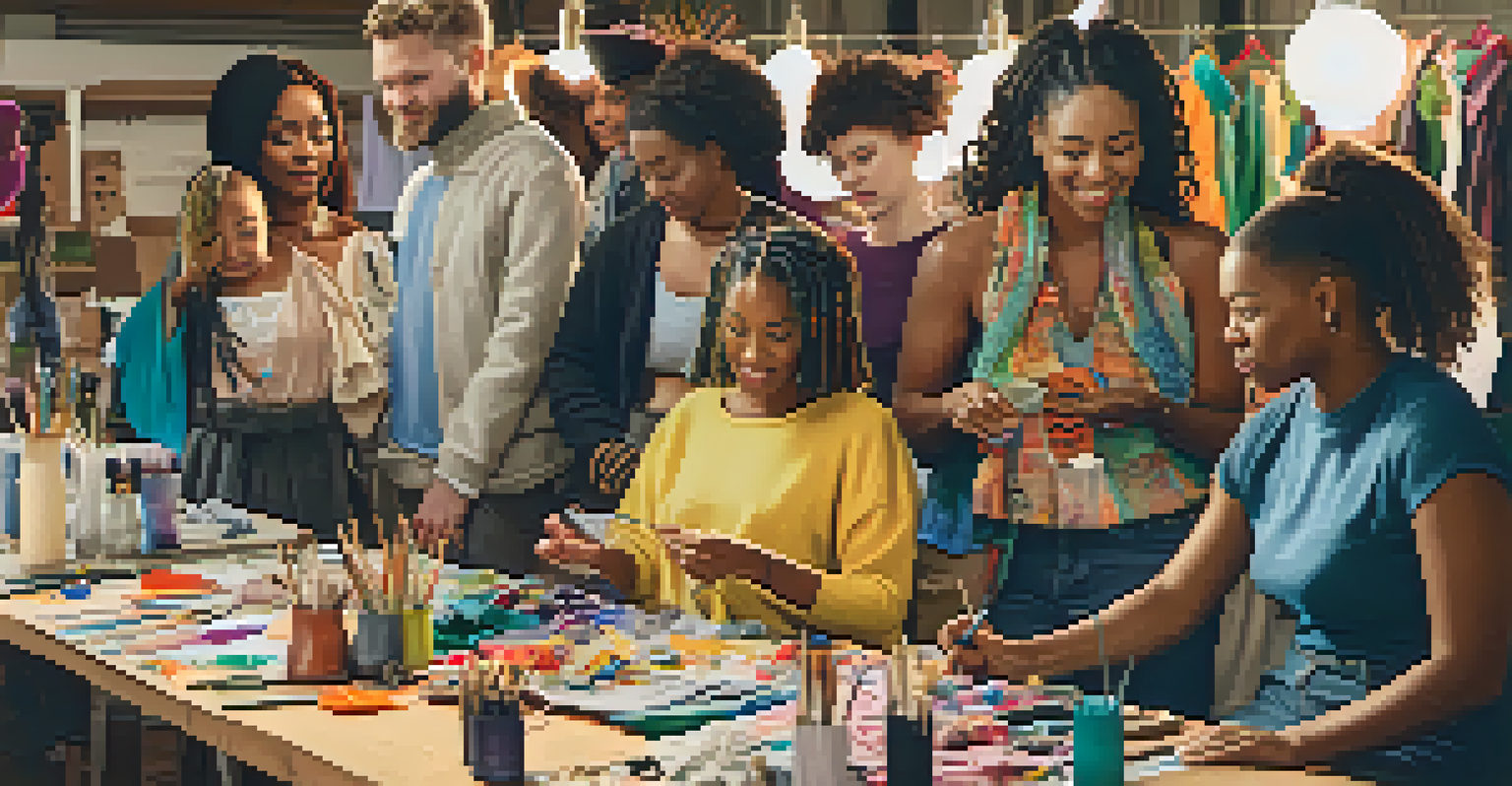Sustainable Fashion: Forecasting Trends for Eco-Friendly Styles

Understanding Sustainable Fashion and Its Importance
Sustainable fashion focuses on creating clothing in a way that is environmentally friendly, socially responsible, and economically viable. This approach not only minimizes harmful impacts on the planet but also promotes ethical labor practices. As consumers become more conscious of their choices, the demand for sustainable options is growing.
Fashion is about dreaming and making other people dream. It's about creating a whole universe where people can escape and feel free. But I think that this universe should be sustainable, and it should be for everyone.
For instance, brands are increasingly adopting eco-friendly materials like organic cotton, Tencel, and recycled fabrics. This shift not only reduces waste but also conserves resources, appealing to environmentally savvy shoppers. The rise of transparency in the fashion industry further encourages brands to disclose their practices, fostering trust with consumers.
Ultimately, understanding the significance of sustainable fashion is crucial for both consumers and brands. It’s not just a trend; it’s a movement towards a more responsible and mindful way of dressing. As we delve deeper into this topic, let’s explore the exciting trends emerging in eco-friendly styles.
The Rise of Circular Fashion: Redefining Consumption
Circular fashion is an innovative concept that aims to close the loop in clothing production and consumption. Instead of the traditional linear model—where items are made, used, and then discarded—circular fashion promotes recycling, upcycling, and reusing. This shift significantly reduces waste and environmental impact.

Brands are increasingly adopting circular practices by designing clothes with their entire lifecycle in mind. For example, some companies offer take-back programs, allowing customers to return old garments for recycling or repurposing. This initiative not only extends the life of products but also encourages consumers to think critically about their purchases.
Sustainable Fashion's Growing Importance
Sustainable fashion emphasizes eco-friendly practices and ethical labor, responding to rising consumer demand for responsible choices.
As we look ahead, circular fashion will likely become a dominant trend, shaping how we view clothing and its longevity. By prioritizing sustainability in design and production, we can contribute to a healthier planet while enjoying stylish, eco-friendly wardrobes.
Innovative Materials: The Future of Eco-Friendly Fabrics
The fashion industry is witnessing a surge in the development of innovative materials that prioritize sustainability. From biodegradable fabrics to textiles made from recycled plastics, designers are getting creative with their choices. This not only reduces the industry's carbon footprint but also introduces unique textures and styles.
The greatest threat to our planet is the belief that someone else will save it.
For instance, brands are experimenting with materials like Piñatex, derived from pineapple leaves, and mushroom leather, crafted from mycelium. These alternatives not only offer a sustainable option but also provide consumers with a chance to wear something truly unique. As these materials gain traction, they could revolutionize the way we think about fabric.
In the coming years, we can expect to see even more advancements in sustainable materials. As technology evolves, so too will our options for eco-friendly fashion, allowing consumers to express their style without compromising their values.
Ethical Production: Fair Labor Practices in Fashion
As sustainability gains importance, ethical production is becoming a key focus for fashion brands. This means ensuring fair wages, safe working conditions, and respect for workers' rights throughout the supply chain. Consumers are increasingly demanding transparency, pushing brands to showcase their commitment to ethical practices.
For example, brands that prioritize ethical production often share their sourcing stories, highlighting the artisans behind each piece. This not only builds a better connection with consumers but also empowers workers and promotes fair trade. By choosing to support these brands, shoppers can make a positive impact on the lives of others.
Circular Fashion Redefines Consumption
Circular fashion promotes recycling and reusing, closing the loop in clothing production to minimize waste and environmental impact.
As we move forward, ethical production will likely become a cornerstone of sustainable fashion. It’s not just about looking good; it’s about feeling good knowing that our choices support fair labor practices and foster a more equitable world.
Consumer Consciousness: The Role of Mindful Shopping
Consumer consciousness is shifting, with more people opting for mindful shopping practices. This involves making intentional choices about what to buy, focusing on quality over quantity, and supporting sustainable brands. As consumers educate themselves about the impacts of fast fashion, they are becoming more discerning in their purchases.
For instance, many shoppers are now considering the environmental footprint of their clothing. This includes looking for certifications like GOTS (Global Organic Textile Standard) or OEKO-TEX, which ensure that products meet specific sustainability criteria. By prioritizing these labels, consumers can make informed decisions that align with their values.
As we look towards the future, the trend of mindful shopping is expected to grow. This shift in consumer behavior not only benefits the environment but also encourages brands to prioritize sustainability in their offerings.
Digital Innovation: Tech's Role in Sustainable Fashion
Digital innovation is revolutionizing the fashion landscape, providing tools that enhance sustainability. From virtual fitting rooms to AI-driven inventory management, technology is helping brands optimize their processes and reduce waste. By embracing these advancements, the industry can take significant steps towards sustainability.
For example, some brands are using 3D printing technology to create garments on demand, minimizing excess inventory and waste. This not only streamlines production but also allows for greater customization and creativity in designs. As technology continues to evolve, we can expect even more innovative solutions to emerge.
Mindful Shopping for a Better Future
Consumer consciousness is shifting towards mindful shopping, prioritizing quality and sustainability to support ethical brands.
Looking ahead, the intersection of fashion and technology will be crucial in shaping sustainable practices. By leveraging digital tools, the industry can promote eco-friendly choices while catering to the ever-evolving preferences of consumers.
Community and Collaboration: Building a Sustainable Future
Community and collaboration are essential components of the sustainable fashion movement. As brands, consumers, and organizations come together, they can amplify their impact and drive meaningful change. By sharing resources, knowledge, and support, the fashion community can work towards a more sustainable future.
For instance, initiatives like Fashion Revolution encourage consumers to ask brands, 'Who made my clothes?' This grassroots movement fosters transparency and inspires collective action among consumers and brands alike. Through collaboration, we can create a culture of accountability and awareness surrounding ethical practices.

As we move forward, fostering a sense of community will be vital for the sustainable fashion movement. Together, we can champion eco-friendly practices, support ethical brands, and ultimately contribute to a more sustainable world for future generations.